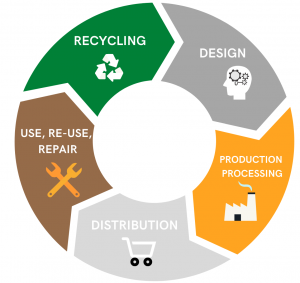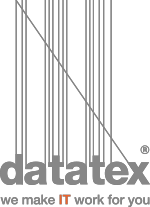Jeder europäische Bürger verbraucht 26 kg Textilien pro Jahr, vor allem wegen des sich ausbreitenden Phänomens der „Fast Fashion“. Unsere Art zu konsumieren ist in der Tat stark von diesem Modell beeinflusst, bei dem ständig neue Stile entworfen werden, die jedes Jahr neue Kollektionen hervorbringen und so die Preise senken.
Nach der schweren Krise, die durch COVID 19 ausgelöst wurde und in der selbst die größten Einzelhandelsketten mit vielen Schwierigkeiten zu kämpfen hatten, muss die gesamte Fast-Fashion-Lieferkette ihre Marktansätze neu überdenken.
In der Tat ist das Bekleidungssystem heute zweifellos sehr umwelt- und ressourcenintensiv. Gleichzeitig ist sie aber auch ein wesentlicher Bestandteil unseres täglichen Lebens und der Weltwirtschaft. Es ist eine Tatsache, dass mehr als 300 Millionen Menschen in der Bekleidungslieferkette beschäftigt sind, was 60 % der gesamten Textilindustrie entspricht.
Trotz ihrer wirtschaftlichen Bedeutung ist es wichtig zu betonen, dass die Textilindustrie auf nicht erneuerbaren Ressourcen basiert, jährlich 93 Milliarden Kubikmeter Wasser verbraucht und 1,2 Milliarden Tonnen CO2 an Treibhausgasen produziert.
In den letzten 15 Jahren haben wir einen enormen Anstieg der Bekleidungsproduktion erlebt, mit einer Verdoppelung, die sowohl durch das Phänomen der „Fast Fashion“ als auch durch die Zunahme der Menschen, die es sich leisten können, einzukaufen, verursacht wurde. Insbesondere werden immer mehr minderwertige Kleidungsstücke produziert, die nicht für eine längere Wiederverwendung geeignet sind und auf Quantität statt auf Qualität ausgerichtet sind.

Heutzutage gibt es viele Initiativen, die sich auf die Verringerung der durch das derzeitige System der Textilproduktion verursachten Umweltverschmutzung konzentrieren, aber sie befassen sich mit den Auswirkungen und nicht mit den Ursachen. Im Gegensatz dazu sieht der Ansatz der Kreislaufwirtschaft vor, dass Kleidung länger genutzt wird und weniger Recyclingverfahren eingesetzt werden müssen, um ihre umweltschädlichen Auswirkungen zu verringern.
In dieser neuen Art der Textilwirtschaft sind Kleidung und Stoffe von höherer Qualität, damit sie von den Verbrauchern länger genutzt werden können und nach ihrem Gebrauch wieder in den Wirtschaftskreislauf gelangen, so dass sie nicht entsorgt werden müssen. Durch die Förderung einer wiederholten Verwendung der gleichen Kleidungsstücke werden die Auswirkungen auf die Umwelt geringer als bei jeder anderen Art von Textilrecycling.
Der Weg, den man einschlagen muss, um einen dauerhaften Wert zu gewährleisten, besteht in der Notwendigkeit, qualitativ hochwertige Kleidungsstücke mit langfristiger Haltbarkeit anzubieten.
Die Produktion von Stoffen zur Herstellung von Kleidung spielt eine wichtige Rolle, und dank des Datatex-Moduls NOW –Qualität ist es möglich, ein hohes Maß an Produktqualität zu gewährleisten, indem in einem bestimmten Moment sehr schnell Qualitätskontrollen sowohl bei Rohstoffen als auch während des Produktionsprozesses durchgeführt werden. Alle von den Tests stammenden Werte werden aufgezeichnet, so dass es einfacher ist, die Produkttrends zu verwalten und Produkte mit einem immer höheren Qualitätsniveau anzubieten.




